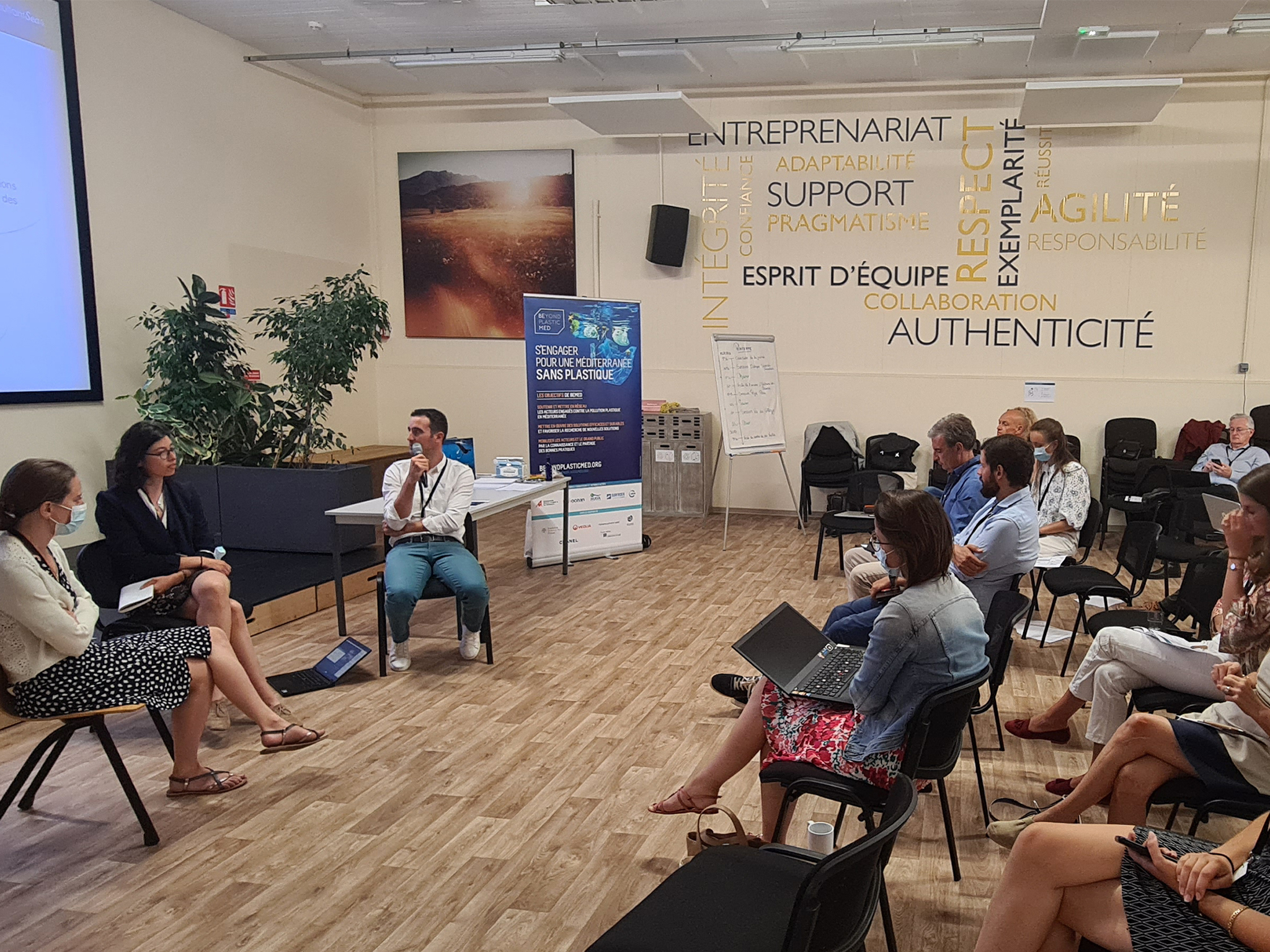
For the past year, members of BeMed Business Club have been working on “an emblematic case of eco-design, which brings together concrete issues common to different companies.” The objective, beyond the prevention of plastic pollution, is to share the analysis approach and the key questions to ask oneself. The 5-step methodology is based on a vision that takes into account the entire life cycle. It was built with Jean-François Ghiglione and Carole Charbuillet and is coordinated by BeMed’s secretariat and ConsultantSeas.
The methodology : 5 steps to support companies’ approach
1. Definition of the object
As companies are from different sectors, mainly cosmetics and food processing, it was necessary to define the emblematic case from the individual problems. The group agreed on the small flexible multi-material bag, generally used for sampling.
2. In-depth diagnosis
After describing the life cycle of our product/packaging pair, the group identified the technical characteristics of the flexible bag in detail. Indeed, each member tried to go back in time to the history of the creation of the packaging in question and inquired about any customer studies conducted on the product. This study also allowed them to question its use and its purpose.
3. Search for solutions
During the solution-finding phase, the different levels of eco-innovation were discussed : incremental improvement, product redesign, functional innovation, system/product innovation. To exploit the richness of the exchanges, an innovation sprint with 2 meetings per week was organized during 3 weeks in April. For 14 hours, participants were able to exchange ideas around two main orientations : “keeping the bag and reducing its environmental impact” and “meeting the need for single-use packaging”. Six concrete solutions emerged from these discussions.
In particular, the group sought to identify action levers for each phase of the life cycle (resource extraction; manufacturing; transport; distribution; use; end of life). For example, on the end of life, the solution of biodegradability was widely discussed in terms of desirability and feasibility. We also went back to the minimum characteristics of our bag, both in terms of technical properties and marketing needs. Possible trade-offs (expiration date, printability, etc.) were discussed with materials scientists. The human and social sciences provided a theoretical view of the effectiveness of sampling with the notion of reciprocity (Cialdini) and the limits of its application to our case.
4. & 5. Comparative evaluation & operational test
For the benchmarking and testing phase, members needed to move away from our test case and return to their particular case. Everyone’s needs and specifics vary and needed to be taken into account. This does not mean that the group stops working together, the collective can still have a strong added value. One shares his failures and successes, but can also mutualize certain scientific knowledge.
“The desire to concretize and operationalize these actions in the field is shared by all the actors with the will to innovate and to be ambitious being their principal motivation.”
Summary of the group’s interventions
Back to the genesis of the working group : the mobilization of sciences on a common issue
This working group was born from the will to make scientists and companies work together, with a common goal. On the science and research side, the project involves researchers from various laboratories such as LOMIC/CNRS-Sorbonne University, IRDL, ENSAM, IMSIC. The expertise ranges from polymer sciences to behavioral sciences, including industrial creativity and eco-design. On the company side, the work has involved teams from the CSR, packaging, supply, R&D, eco-design and marketing departments. The scientific support allowed each company to question the case study in its entirety.